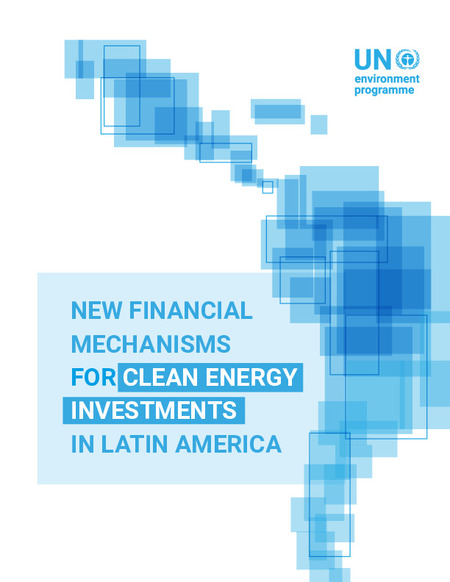New Financial Mechanisms for Clean Energy Investments in Latin America

Date
2023-05Author
United Nations Environment Programme
Citation Tool
Bibliographic Managers
RT Generic T1 New Financial Mechanisms for Clean Energy Investments in Latin America A1 United Nations Environment Programme YR 2023-05 LK https://wedocs.unep.org/20.500.11822/42471 PB AB TY - GEN T1 - New Financial Mechanisms for Clean Energy Investments in Latin America AU - United Nations Environment Programme Y1 - 2023-05 UR - https://wedocs.unep.org/20.500.11822/42471 PB - AB - @misc{20.500.11822_42471 author = {United Nations Environment Programme}, title = {New Financial Mechanisms for Clean Energy Investments in Latin America}, year = {2023-05}, abstract = {}, url = {https://wedocs.unep.org/20.500.11822/42471} } @misc{20.500.11822_42471 author = {United Nations Environment Programme}, title = {New Financial Mechanisms for Clean Energy Investments in Latin America}, year = {2023-05}, abstract = {}, url = {https://wedocs.unep.org/20.500.11822/42471} } TY - GEN T1 - New Financial Mechanisms for Clean Energy Investments in Latin America AU - United Nations Environment Programme UR - https://wedocs.unep.org/20.500.11822/42471 PB - AB -View/Open
Item Statistics
Display item statisticsMetadata
Show full item recordDescription
UNEP’s Finance Unit and Regional Office for Latin America and the Caribbean have commissioned this work to map out regional needs for clean energy investments in Latin America and demonstrate that through an innovative public-private support mechanism, the existing early-stage financing gap for renewable energy and energy efficiency investments in the region can be bridged. The analysis has been focused on 12 countries in Latin America: Six from Central America (Costa Rica, El Salvador, Guatemala, Honduras, Nicaragua, and Panama), and six from South America (Argentina, Bolivia, Colombia, Ecuador, Paraguay, and Peru). The report starts with a brief overview of the region’s climate, economic, energy profiles and current clean energy investments in section 2. Section 3 takes stock of the current regulatory and policy framework for clean energy and the barriers it poses for clean energy investments while section 4 analyses market and financial barriers. Such barriers are part of a broader context of existing initiatives and trends of which an overview is provided in section 5 to map ongoing efforts and gaps that are left unaddressed. Section 6 works as a conclusion summarizing those gaps and potential ways to address them.
Collections
Document Viewer
To read more, scroll down below.
Related items
Showing items related by title, author, creator and subject.
-
Renewables 2019 Global Status Report
REN21 (2019)The Renewables 2019 Global Status Report (GSR 2019) marks 15 years since Bonn2004, the landmark international conference that gave rise to REN21. Then, a “coalition of the willing” came together with one objective in mind: ... -
Renewables 2012 Global Status Report
REN21 (2012)The REN21 Renewables Global Status Report provides a comprehensive and timely overview of renewable energy market, industry, and policy developments worldwide, providing a sound basis for measuring global progress in ... -
Renewables 2011 Global Status Report
REN21 (2011)Changes in renewable energy markets, investments, industries, and policies have been so rapid in recent years that perceptions of the status of renewable energy can lag years behind the reality. This report captures that ...




